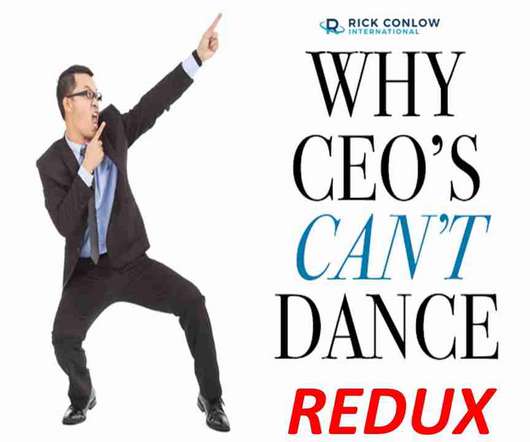Why CEOs Can’t Dance Redux
Rick Conlow
JANUARY 2, 2023
They operate in a bubble and do not attend the party. to 17.9%, from 1980 to 2015. Kouzes and Posner, authors of The Leadership Challenge, found that over 80% of managers value honesty as a key characteristic in their leaders. Do you want to benchmark your career with the habits of extraordinarily successful people?














Let's personalize your content